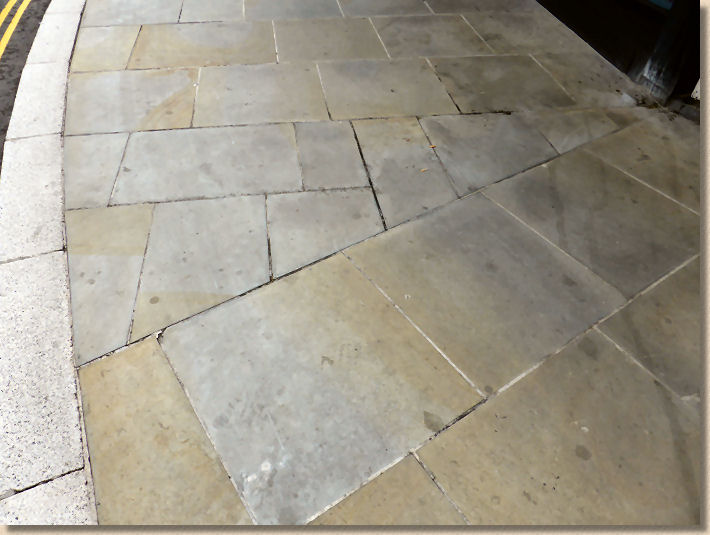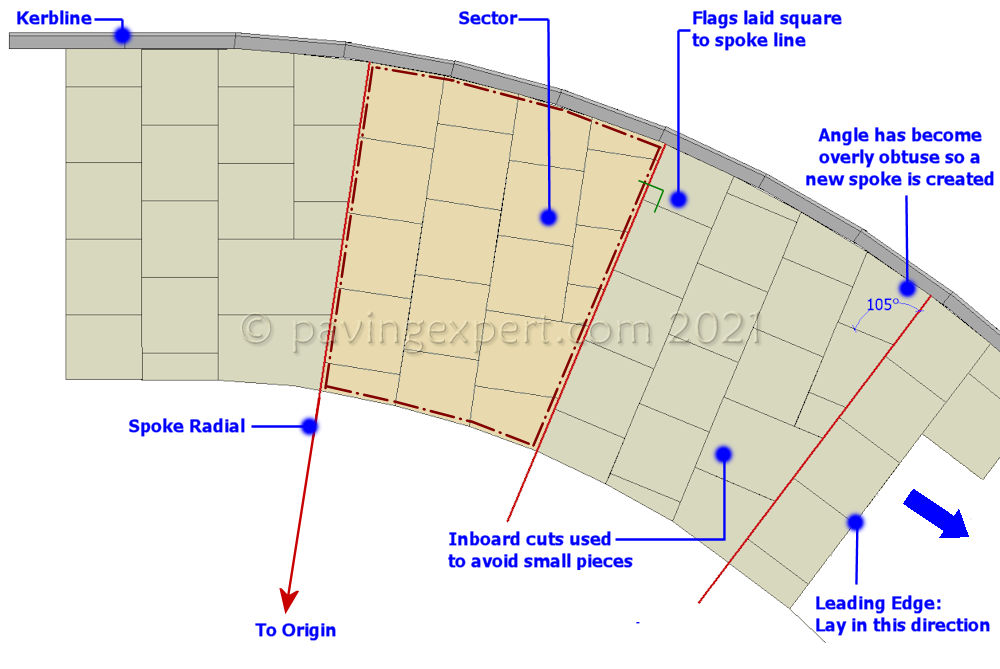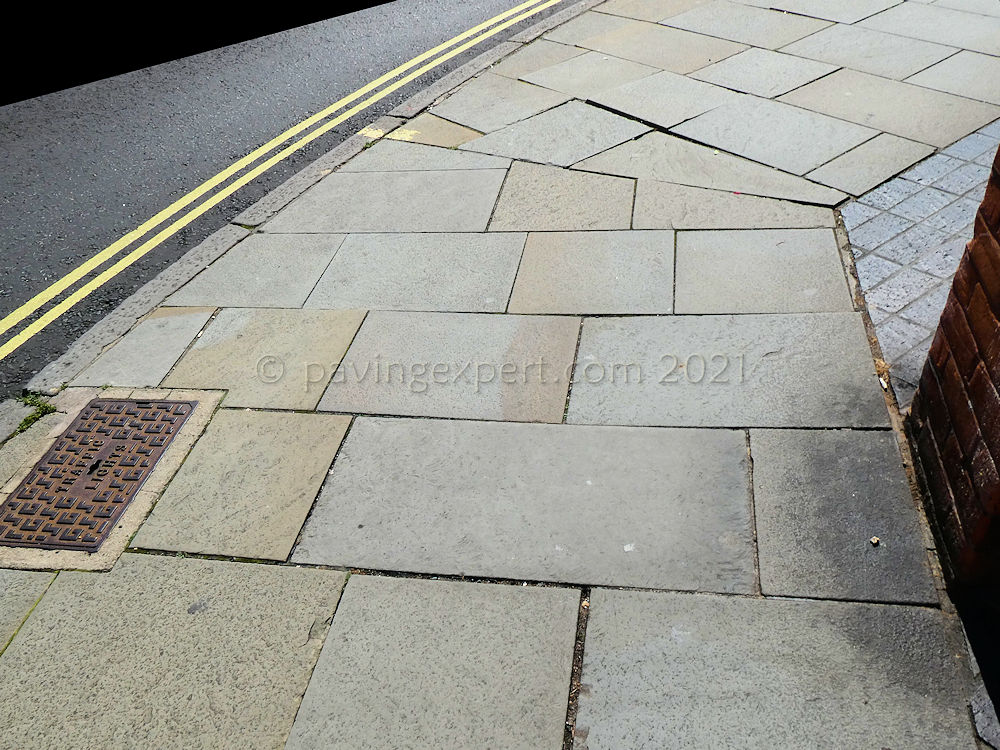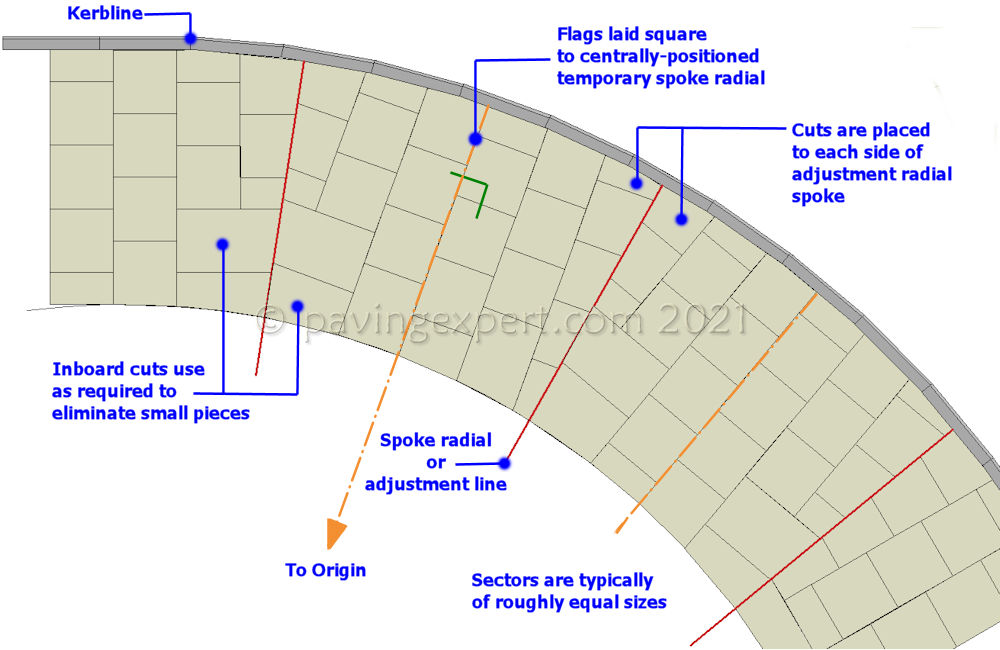Introduction:
This page is part of a series of pages that consider cutting techniques used with flags (or slabs, if that's what you call 'em). The first page examined the basic principles of cutting-in: this page looks at how the layout for both a Single-Cut Skewed Radius and a Double-cut Skewed Radius are prepared; related pages consider other cut features such as notches, curves and flagged radii. See the menu above right or the related pages listing at the foot of this page for a more comprehensive guide to what's available.
Skewed radii
A skewed radius is yet another option for taking flagstone paving around a corner.
It isn't as aesthetically pleasing as, say, a ring or fan radius , but it can have the benefit of minimising the amount of cutting required, especially when a single-cut version is used, and so it is being increasingly used as an option on projects where installers with the genuine skills and knowledge required to construct a more decorative solution might be difficult to find.
Single Cut Option

On a single-cut version, the radius is separated by radial 'spokes' into a series of sectors and each sector is flagged square to the preceding spoke radial, until the angle between the transverse course of flags and the arc of the kerbline (or back line) becomes overly obtuse (c. 105°), or a specific sector length has been reached, whereupon a new spoke radial is established by cutting the leading edge of a transverse course and starting a new sector.

As mentioned, the big saving with a single-cut skewed radius is the reduced amount of cutting. Many of the flags used to cover the area remain whole, with only the flags adjacent to the front (kerbline) and rear arcs, along with those against the next spoke radial, needing to be cut. Compared to, say, a ring radius , this is a significant reduction in cutting and labour, but a run-out corner remains the most effective solution for when cutting has to be kept to the bare minimum.
Using inboard cutting techniques will eliminate small pieces and create a more competent layout, with less risk of breakages.
Obviously, any given radius can be designed beforehand to create sectors of equal size and so achieve a more visually pleasing layout. However, all too often, it is left to untrained operatives on site to 'guesstimate' their way around the radius and hope for the best.
Double Cut Skewed Radius
However, when there are aesthetic considerations, or a streetmason is keen to demonstrate their skills, a Double Cut Skewed Radius can be used as an alternative.
With this layout, the flags are laid square to a hypothetical radius or spoke line positioned centrally within each sector, and cut flags are then used where adjacent sectors meet. This, obviously results in cut pieces being used to each side of the spoke line, and twice as many cuts as an equivalent single-cut skewed radius, but they do look that bit better when done properly.


Regardless of whether it's a single- or double cut, sectors can be planned to be of roughly equal sizes and thereby give a more regular, professional finish to the work.
